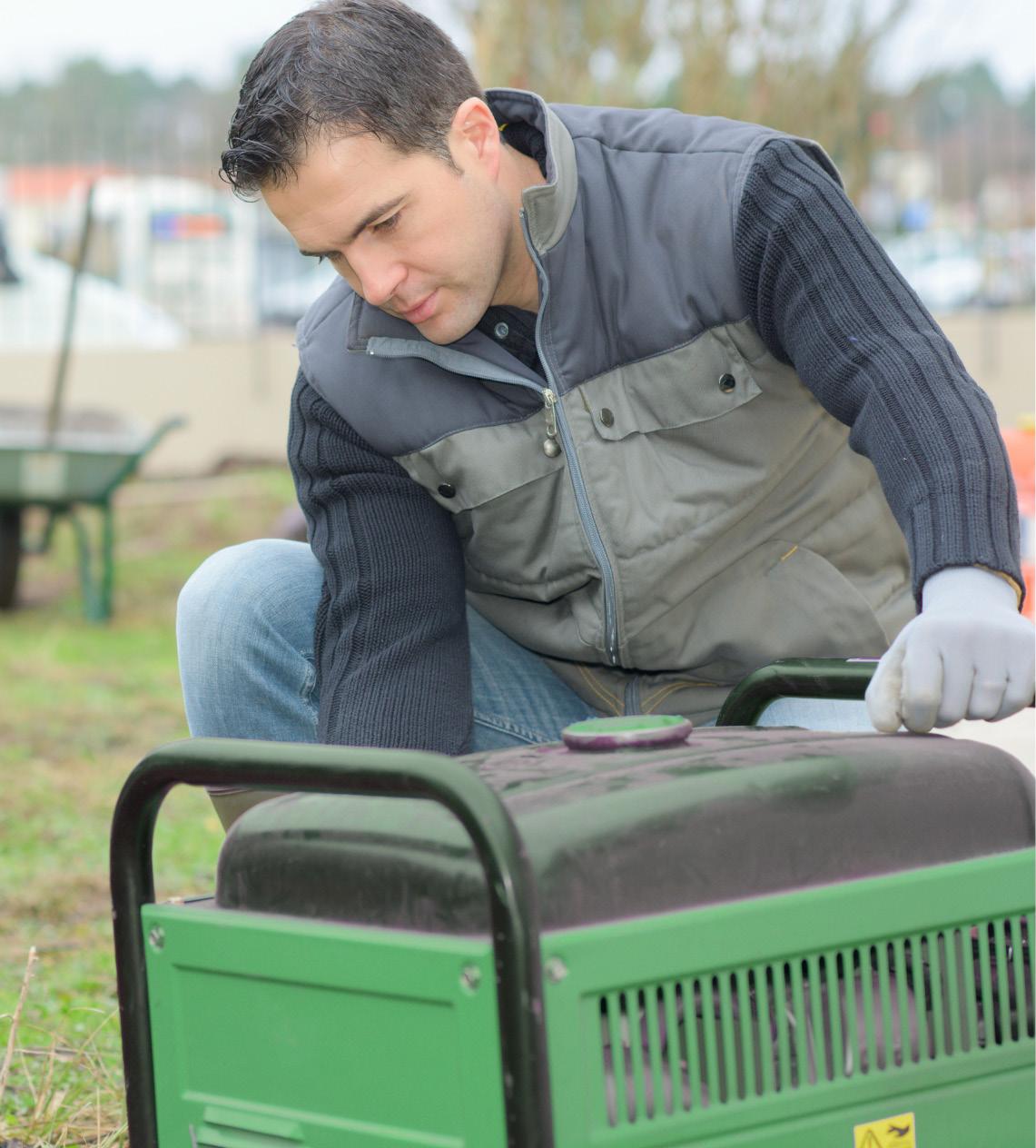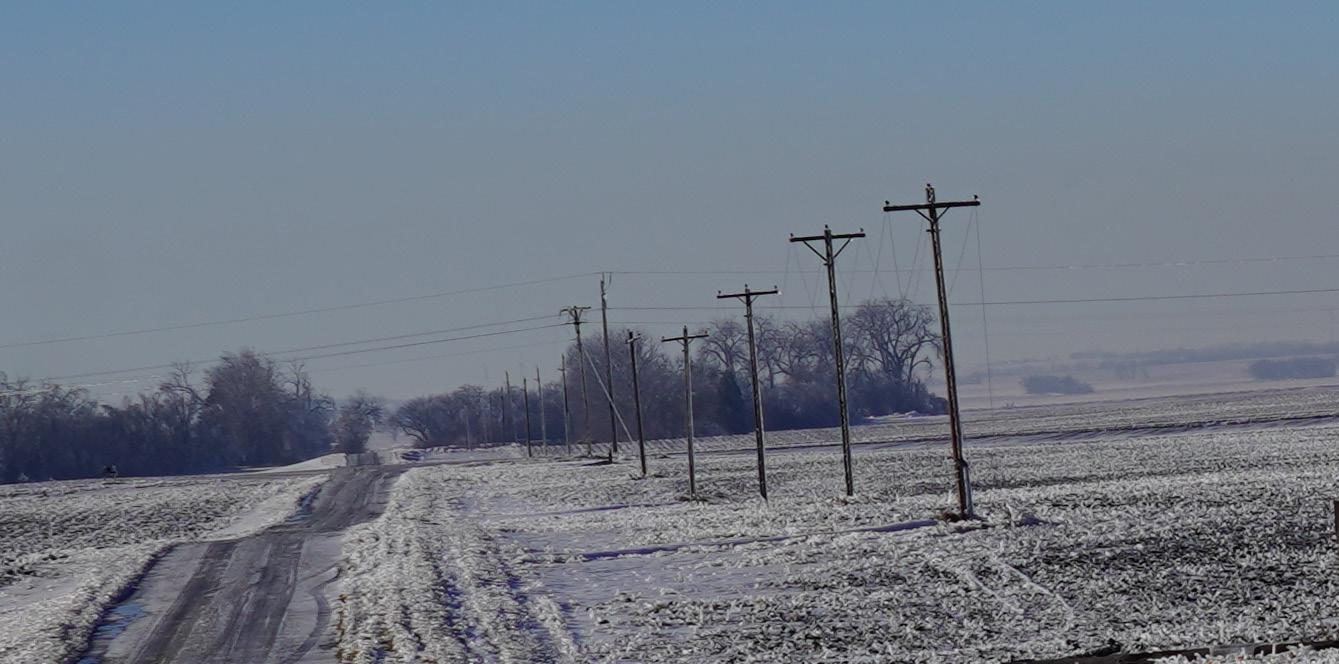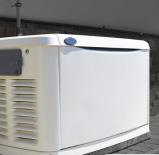GENERATOR








• Keep all standby, portable, and inverter generators at least 20 feet from your home.
• Direct exhaust from your generator away from your home.
• Make sure to start and stop generators when no electrical loads are connected.
• Ensure your generator is properly grounded. Use a ground fault circuit interpreter (GFCI) to prevent electrical shock injuries.
• Keep generators dry and out of rain/snow.
• Connect a generator directly to your home’s wiring without the appropriate transfer switch installed.
• Plug a generator into a regular household outlet.
• Operate a generator in a closed space.
• Fuel a generating while it is operating.
• Overload generators.
• Touch hot parts of the generator while in use (muffler or engine components).
Misuse or improper use of generators can cause fires, electrocution, and carbon monoxide poisoning.
Always call a licensed electrician to install standby (home) generators!
Whether you’re making your first purchase or are a lifelong generator owner, keeping your generator maintained is critical to optimal performance and safety.
Knowledge of fuel supply and other logistics of your generator is also imperative. Treat the following as a checklist to ensure peak performance and longevity.
Just like any other device, generators experience wear and tear. In addition to consistently looking for leaks, it’s critical to conduct yearly check-ups on your generator’s battery condition, oil, air filters, and hoses.
There are many different fuel sources for generators, including gasoline, diesel, propane, natural gas, and solar. Communicate with a licensed electrician or check your owner’s manual to gain knowledge on what fuel is required for your generator.
This allows you to transfer from utility power to backup power either manually or automatically.
Double throw switches can be purchased at your local hardware store or an electrical distribution center.
Don’t wait until a storm hits or the power goes out to see if your generator runs smoothly. Test run your device before you need it!
Scan for more safety knowledge







Let’s face it; while countless benefits come with living in North Dakota, winter isn’t always the kindest to residents of the Peace Garden State. Cass County Electric Cooperative (CCEC) takes great pride in providing reliable and affordable electricity to its members, yet it’s important to be prepared for the rare occurrence of a power outage.


There are various types of generators equipped to suit daily needs and lifestyles. Each style of generator has different wattage capacities and pros and cons.
For many, that proactive approach means purchasing a generator. Generators come in all shapes and sizes and can ensure you have electricity and heat during a power outage. And while they can fill a critical need during difficult times, they can also cause serious damage, injury, or even death if not used or installed properly.
As your trusted energy advisor, CCEC hopes this guide to generator knowledge and safety will help determine which type of generator is the best fit for you while also equipping you and your loved ones with tools to operate your generator safely.
There are different types of generators but one underlying constant; always contact a licensed electrician to install your new generator. Spending a few extra bucks far outweighs the consequences of improperly installing a generator.
Through the warmest of summers and coldest of winters, we’re honored to serve you.
- The team at Cass County Electric Cooperative
Standby Generators are the powerhouse of the generator family, creating enough electricity to power an entire house or farm. If the power goes out, standby generators turn on automatically. Because they carry the largest wattage, standby generators are the most expensive.

Best for: Automatically powering an entire home or farm during an outage.
Wattage: 7,000+ | Cost: $6,000-$11,000
Portable generators typically run on gas and as the name implies, are portable. These generators are often less expensive than standby generators, but supply much less wattage, meaning they are ideal for small, short turn use. For greater efficiency and longer run time, choose auto-idle to idle the engine down when it’s not in use.
Best for: General power applications
Wattage: 2,000+ | Cost: $500-$2,000


A quieter cousin of portable generators, inverter generators throttle up and down to match demand (instead of constant full power). These generators have a more true sign wave than portables, making them more suitable for modern day appliances. Given their complex engine and lower noise levels, these typically cost more than portables.
Best for: More sensitive power applications (computers, large televisions, video equipment)
Wattage: 2,000+ | Cost: $100-$5,000+
While typically more expensive than portables, these stations are powered by batteries that can be charged by electricity or solar panels. Very quiet and emission free, these can be used indoors. While environmentally friendly, these aren’t typically used to power as many appliances as portables or inverters.

Best for: Indoor use, fuel-free alternative Wattage: 500-2,000 (can be paralleled for increased capacity | Cost: $200-$5,000+
There are many different brands, models, and price ranges of generators. It’s important to talk to a licensed electrician about your electricity needs before purchasing a generator.
Portable Generators Standby Generators